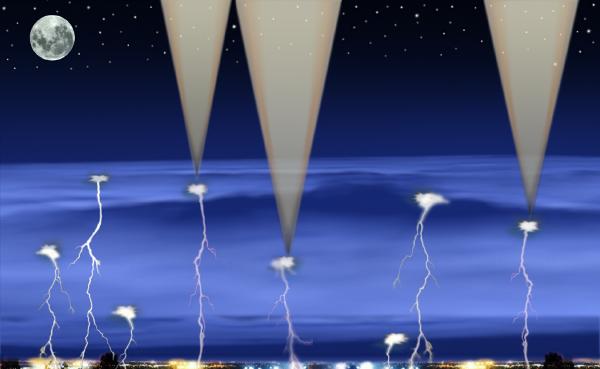The mission is the second project under the NSF CubeSat program. A CubeSat satellite consists of three cubes attached end to end in a rectangular shape.
TGFs are short, powerful bursts of gamma rays emitted into space from Earth's upper atmosphere. The gamma rays are thought to be emitted by electrons traveling at or near the speed of light when they are slowed down by interaction with atoms in the upper atmosphere. These events may occur much more often than realized and may be associated with a significant fraction of the roughly 60 lightning strokes per second that occur worldwide. They could have a large effect on the upper atmosphere and near-Earth space, scientists say.

Firefly is a new mission to study lightning and gamma rays with CubeSats, small satellites in the shape of a cube. Credit: NASA/GSFC
Build-up of electric charge at the tops of thunder clouds from lightning discharges can create a large electric field between the tops of clouds and the ionosphere, the outer layer of Earth's atmosphere. But how this might lead to the generation of these extremely energetic electrons is not well understood.
"This mission could provide the first direct evidence for the relationship between lightning and TGFs, and addresses an important research question in atmospheric electricity," said Anne-Marie Schmoltner, head of NSF's Atmospheric Sciences Division's Lower Atmosphere Research Section. "Identifying the source of terrestrial gamma ray flashes would be a great step toward fully understanding the physics behind lightning and its effect on the Earth's atmosphere." To accomplish these goals, Firefly will carry a gamma-ray detector along with a suite of instruments to detect lightning.
Students will be involved in all aspects of the project, from design and development, through fabrication and test, to mission operations and data analysis.
The Firefly team is a collaboration of scientists and students at the NASA Goddard Space Flight Center, Greenbelt, Md.; Siena College, Loudonville, N.Y.; Universities Space Research Association, Columbia, Md.; Hawk Institute for Space Science, Pocomoke City, Md.; and University of Maryland Eastern Shore, Princess Anne, Md.
Sponsored by the National Science Foundation (NSF).






Comments